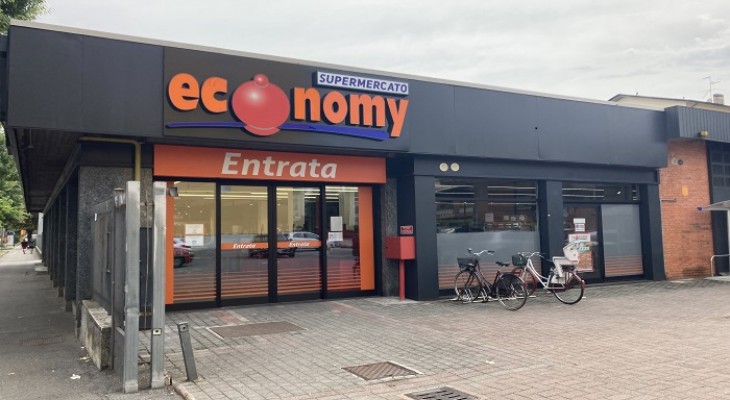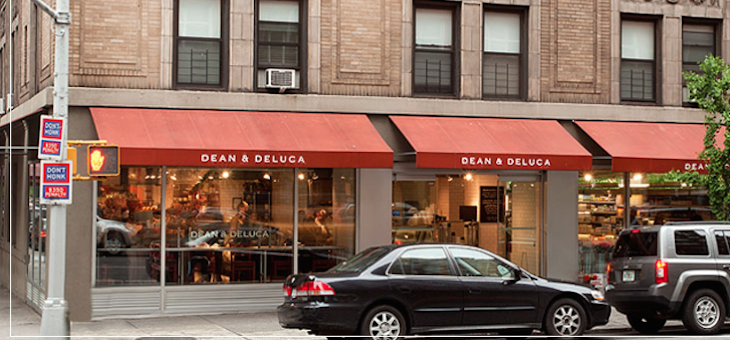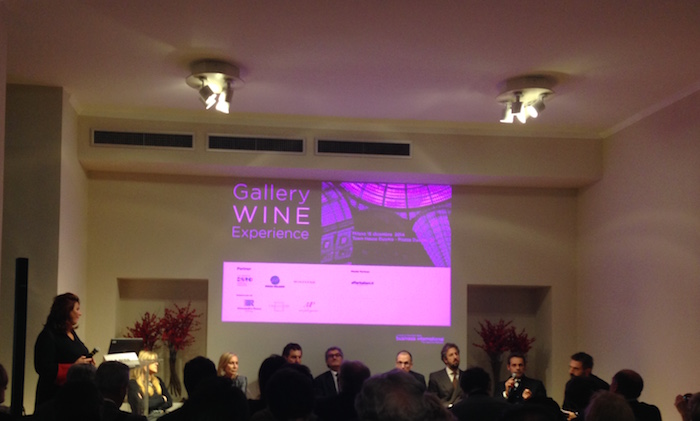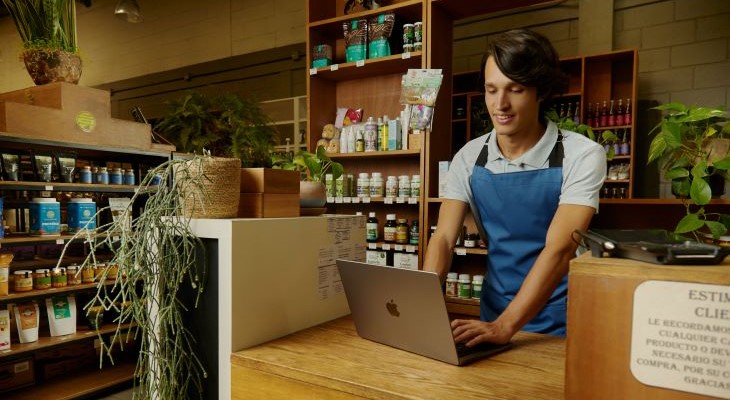Dopo Leader Price e Crai, ora è la volta di Economy. A Treviglio, in provincia di Bergamo, Codè Crai Ovest passa il testimone al Gruppo Realco: il retailer emiliano è subentrato nella gestione del negozio di via XX Settembre, che dunque cambia insegna per la terza volta nel giro di tre anni e mezzo. Aperto a febbraio del 2019 come Leader Price – la catena discount portata in Italia grazie a una joint venture tra Crai e il gruppo francese Geimex/Casinò – il punto vendita era diventato un supermercato Crai la scorsa primavera, nell’ambito del piano di riconversione di 7 Leader Price lombardi deciso da Codè Crai Ovest. A seguire c’è stata però la cessione al Gruppo Realco delle unità commerciali di Treviglio e Borgosatollo (Bs). Quest’ultima, estesa su 500 metri quadri, è stata riaperta lo scorso 24 agosto con insegna Sigma, mentre Treviglio da ieri, 7 settembre, è diventato l’ottavo Economy di Gruppo Realco, il secondo in Lombardia dopo quello di Ghedi (Bs), mentre tutti gli altri sono in Emilia-Romagna.
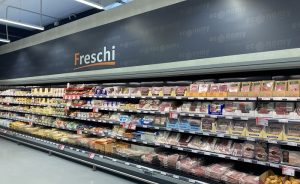 Nei 700 metri quadri di area di vendita di Treviglio, Economy propone 5.600 referenze, confermando la sua natura “ibrida”, a metà strada tra supermercato e discount. Nelle principali categorie l’assortimento comprende sempre un brand industriale noto, mentre le marche del distributore sono quelle sviluppate dalla centrale Italy Discount, a cui Gruppo Realco partecipa. Il negozio è stato oggetto di un rebranding esterno e interno, ma la collocazione dei reparti è rimasta sostanzialmente immutata. Fa eccezione la Cantina, spostata nel corridoio finale che conduce alle casse, mentre ai vini Leader Price aveva dedicato uno scaffale perimetrale più sul fondo del negozio, caratterizzando l’area con una pavimentazione diversa rispetto al resto della superficie. Dal canto suo Gruppo Realco ha inteso privilegiare l’efficienza logistica – lo spazio della vecchia enoteca è stato ora assegnato alle acque, perché accanto al magazzino – e probabilmente il contrasto delle differenze inventariali (il reparto vini è ora ben visibile dalle casse, mentre nella precedente collocazione risultava nascosto allo sguardo degli operatori) rispetto all’estetica.
Nei 700 metri quadri di area di vendita di Treviglio, Economy propone 5.600 referenze, confermando la sua natura “ibrida”, a metà strada tra supermercato e discount. Nelle principali categorie l’assortimento comprende sempre un brand industriale noto, mentre le marche del distributore sono quelle sviluppate dalla centrale Italy Discount, a cui Gruppo Realco partecipa. Il negozio è stato oggetto di un rebranding esterno e interno, ma la collocazione dei reparti è rimasta sostanzialmente immutata. Fa eccezione la Cantina, spostata nel corridoio finale che conduce alle casse, mentre ai vini Leader Price aveva dedicato uno scaffale perimetrale più sul fondo del negozio, caratterizzando l’area con una pavimentazione diversa rispetto al resto della superficie. Dal canto suo Gruppo Realco ha inteso privilegiare l’efficienza logistica – lo spazio della vecchia enoteca è stato ora assegnato alle acque, perché accanto al magazzino – e probabilmente il contrasto delle differenze inventariali (il reparto vini è ora ben visibile dalle casse, mentre nella precedente collocazione risultava nascosto allo sguardo degli operatori) rispetto all’estetica.
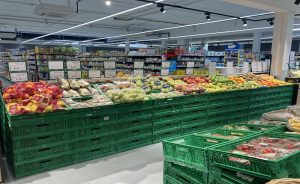 L’anima da supermercato di Economy emerge nello spazio dedicato a freschi e freschissimi. L’ortofrutta proviene dalla stessa piattaforma che rifornisce i punti vendita a insegna Sigma, il reparto gastronomia è servito, mentre la panetteria a libero servizio propone sia pane surgelato e “ravvivato” in negozio, sia pane di un forno locale. La macelleria è a libero servizio, mentre l’ittico è per ora esclusivamente surgelato, ma è già previsto l’inserimento di un’isola con pesce fresco e sushi. Ovviamente determinante per la qualità complessiva della proposta commerciale è il personale, costituito da 13 unità.
L’anima da supermercato di Economy emerge nello spazio dedicato a freschi e freschissimi. L’ortofrutta proviene dalla stessa piattaforma che rifornisce i punti vendita a insegna Sigma, il reparto gastronomia è servito, mentre la panetteria a libero servizio propone sia pane surgelato e “ravvivato” in negozio, sia pane di un forno locale. La macelleria è a libero servizio, mentre l’ittico è per ora esclusivamente surgelato, ma è già previsto l’inserimento di un’isola con pesce fresco e sushi. Ovviamente determinante per la qualità complessiva della proposta commerciale è il personale, costituito da 13 unità.
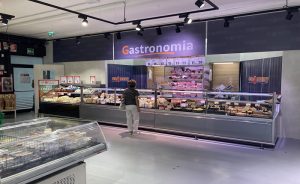 Riuscirà Economy laddove Crai e soprattutto Leader Price hanno fallito? La sfida è difficile, per quanto le formule commerciali siano tra loro differenti. La piazza di Treviglio – secondo centro per importanza, dopo il capoluogo, della provincia di Bergamo – è fortemente presidiata da numerose insegne della Gdo, che si danno battaglia a suon di promozioni e offerte. Il terzetto di testa della classifica italiana del canale discount – Eurospin, Lidl e MD – è presente al completo, con l’aggiunta di Aldi, che ha aperto con buon successo a ottobre 2019. Coop Lombardia con l’insegna Ipercoop ha raccolto l’eredità dello storico ipermercato Pellicano del Gruppo Lombardini, mettendo a frutto il vantaggio di una struttura ampia e ben posizionata, per poi aprire a novembre 2019 un altro supermercato con annesso distributore di carburante. E l’elenco – che comprende anche Unes, U2, Italmark, un negozio della Cooperativa Famiglie Lavoratori aderente al Consorzio Sait – è destinato ad allungarsi con l’arrivo annunciato dalla stampa locale di Famila e soprattutto di Esselunga, assente al momento nella Bassa Bergamasca. Ce n’è abbastanza per ritenere che Treviglio sarà un banco di prova impegnativo per Economy.
Riuscirà Economy laddove Crai e soprattutto Leader Price hanno fallito? La sfida è difficile, per quanto le formule commerciali siano tra loro differenti. La piazza di Treviglio – secondo centro per importanza, dopo il capoluogo, della provincia di Bergamo – è fortemente presidiata da numerose insegne della Gdo, che si danno battaglia a suon di promozioni e offerte. Il terzetto di testa della classifica italiana del canale discount – Eurospin, Lidl e MD – è presente al completo, con l’aggiunta di Aldi, che ha aperto con buon successo a ottobre 2019. Coop Lombardia con l’insegna Ipercoop ha raccolto l’eredità dello storico ipermercato Pellicano del Gruppo Lombardini, mettendo a frutto il vantaggio di una struttura ampia e ben posizionata, per poi aprire a novembre 2019 un altro supermercato con annesso distributore di carburante. E l’elenco – che comprende anche Unes, U2, Italmark, un negozio della Cooperativa Famiglie Lavoratori aderente al Consorzio Sait – è destinato ad allungarsi con l’arrivo annunciato dalla stampa locale di Famila e soprattutto di Esselunga, assente al momento nella Bassa Bergamasca. Ce n’è abbastanza per ritenere che Treviglio sarà un banco di prova impegnativo per Economy.

